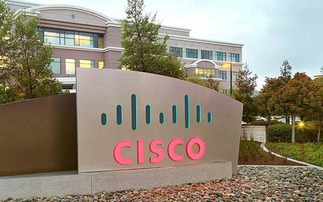
Hyperscale cloud service providers market their services on the basis that not only are they more cost-effective than the on-premise datacenters of old, but that this efficiency makes them greener by default.
To some extent this is true, but datacenters are sucking up ever greater quantities of electricity and water to power and cool these gigantic buildings – and that's after the carbon expended used to build them in the first place.
If you're one of the 84% who told our Tech Trends survey that sustainability matters to them and their businesses, how do you decide which cloud offers the best combination of cost efficiency and sustainability?
An obvious first step is ESG reports, but these often run to 100 pages. Unvarnished data has to be hunted down (usually in an appendix), and getting details involve navigating multiple footnotes and references to supporting documentation. It's not surprising that fewer than 10% of those in our survey said they read ESG reports in detail.
When we asked what CIOs wanted from vendors to help them make informed cloud decisions, we found that almost everyone wanted the same thing – good quality data that was easy to compare from one vendor to another. They wanted transparency, clarity, and metrics they could understand.
To this end, Computing compiled the first Sustainability Matrix in 2022, consisting of four separate quadrants. Each quadrant is made of up to eight criteria we score the cloud giants against.
The quadrants are:
- Standards & Policies: Do the tech giants' environmental pledges reflect their size and power? Do they use that power to encourage higher sustainability standards for suppliers, partners and customers?
- Energy, emissions and water: These criteria compare the data on GHG emissions, energy and water efficiency with ambitions and pledges.
- Waste/Circular Economy/Recycling: This is where we determine the extent to which cloud vendors are squeezing waste out of their value chain, recycling and refurbishing server components and networking equipment and closing the recycling loop.
- Transparency: The final quadrant assesses the transparency of carbon accounting and GHG reporting and overall data accessibility.
The results have been reported as a series of vendor head-to-head comparisons, like this one from last year. This article is our first report from our 2024 findings, with more to come.
Every year we apply the knowledge we've gained from interviewing those in the datacenter industry, or experts in certain aspects of cloud sustainability and the tech community, to update the matrix with new or amended criteria, and remove metrics that no longer offer a meaningful comparison. You can find detail of this years' matrix here. There are 50 points available in total.
And the winner is..
For two years running, Microsoft Azure was judged the most sustainable cloud, but its margin of victory over second-place Google Cloud Platform (GCP) narrowed last year. This year, Google Cloud Platform is the winner, beating Azure into second place. AWS retains third place in our sustainability rankings.
The visualization below shows the maximum score available in each category, and the score each vendor obtained this year underneath it. The final set of bars sets out the overall scores.
In our third year of research, some of earlier Computing's calls - such as those for cloud services data to be disaggregated from the rest of the businesses, better data on waste and circular economy, and greater transparency more generally - have been partially heeded. This applies to all three companies to varying degrees, but to Google in particular.
Google has made considerable progress in data quality and transparency. It breaks datacenters out from the rest of its operation, breaks down data by individual datacenter, and is even trying to get to grips with the environmental impact of third-party datacenters.
Microsoft too breaks down data by region, and Amazon continues to innovate and enable renewable energy projects on an extraordinary scale.
There is notably more effort across the board to provide useful information.

















